Why climate change is inherently racist
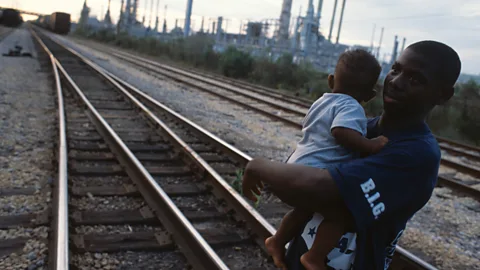 Andrew Lichtenstein/Getty
Andrew Lichtenstein/GettyClimate change divides along racial lines. Could tackling it help address longstanding injustices?
When Hurricane Katrina hit New Orleans in 2005, it was the city's black neighbourhoods that bore the brunt of the storm. Twelve years later, it was the black districts of Houston that took the full force of Hurricane Harvey. In both cases, natural disasters compounded issues in neighbourhoods that were already stretched.
Climate change and racism are two of the biggest challenges of the 21st Century. They are also strongly intertwined. There is a stark divide between who has caused climate change and who is suffering its effects. People of colour across the Global South are those who will be most affected by the climate crisis, even though their carbon footprints are generally very low. Similar racial divides exist within nations too, due to profound structural inequalities laid down by a long legacy of unequal power relationships.
For some, it can be disconcerting to hear terms such as "racism" and "white supremacy" used in discussions about climate change. Climate change is often understood as an environmental issue, one that we are all in together, and therefore not something that could be in any way construed as racist.
But there are many dimensions to racism. The most visible is inter-personal racism, which is ugly and all-too familiar. At its most obvious, this would include racist graffiti, online abuse, or racist chanting at football matches. Much of it is less overt than that, a matter of prejudice and stereotyping.
This is often where discussion of racism stops, with the world neatly divided into "racists" and "not racists". With this simplistic view of the problem, as long as people can reassure themselves that nobody is being actively racist, then all is well. But there are deeper levels to racism. It can be institutional, where people of colour receive an inferior level of service or care. When dealing with institutional racism, there may not be any one specific event or person that can be identified as the problem. The difference in how people are treated is buried away in processes and systems – "racism without racists" as it is sometimes described.
You may also like:
It was the civil rights organisers Charles Hamilton and Kwame Ture who first coined the term "institutional racism" in the 1960s in their book Black Power. They used the example of housing. If a black family was to move into a white neighbourhood and experience abuse, the community would recognise that as racist. Perhaps they would be ashamed, and some might speak out and condemn it. But if the black family were never able to move in the first place, because they couldn't get a mortgage or the estate agent wouldn't show them that part of town, the racism would be invisible. It would be out of sight in the power structures of the housing sector. The white community could reassure itself that "no, there is no racism here", even if the black family knew full well that they had been discriminated against.
 Andrew Lichtenstein / Getty
Andrew Lichtenstein / GettyWhen racism becomes structural in this way, it can operate without obvious intent. There may be no deliberate act of discrimination to find, no "racists" to identify and blame. This is certainly the case with climate change – there is no secret committee of white people plotting to impose climate disaster on the Global South. And yet people of colour still find themselves at a disadvantage, and experience differences in outcomes that are visible in the statistics.
Zambia clearly demonstrates this injustice of climate change. Average carbon footprints in Zambia are very low, coming in at just 0.36 tonnes per person per year – less than one-tenth of the UK average. Nevertheless, the country is facing environmental disaster, including a prolonged drought which left over a million people in need of food assistance in 2021.
"Zambia has been experiencing the negative impact of climate variability and change for the last three decades," says Zambian climate scientist Mulako Kabisa. "The biggest impact has been increased temperature and reduced rainfall, resulting in climate shocks that include droughts and floods."
These changes in rainfall and temperature have resulted in crop failure, livestock deaths and reduced the country's GDP, she adds. "Droughts in particular have led to livelihood loss for the smallholder-dominated agricultural sector, because production is dependent on availability of adequate rain."
While specific events are often tricky to attribute directly to climate change, the IPCC has observed all these impacts in Southern Africa already. Worse is likely to come. "Local evidence and simulated projections all indicate that rainfall will be more variable," says Kabisa. "The production season will shift and drought incidents will be more frequent."
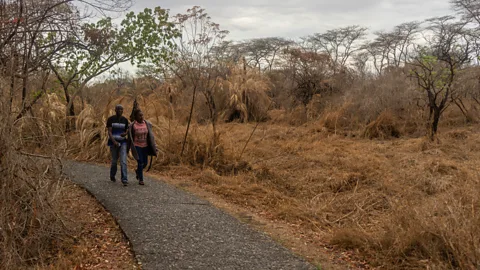 Zinyange Auntony/Getty
Zinyange Auntony/GettyThese experiences of climate breakdown generally don't make the news. In an overview of the most under-reported humanitarian crises of 2021, Zambia came in at number one.
For the Zambian climate activist Veronica Mulenga, the justice implications are clear. "The climate crisis affects some parts of the planet more than others," she says. "Historical and present-day injustices have both left black, indigenous and people-of-colour communities exposed to far greater environmental health hazards than white communities. Those most affected by climate change are black and poor communities. As a continent we are one of the hardest hit by the impacts of climate change and we are left behind as the world progresses toward a low-carbon economy. Without taking into account those most affected, climate solutions will turn into climate exclusion."
This exclusion extends to international negotiations, where Mulenga says her country has been marginalised. "African voices are not well represented in climate summits, leaving climate justice out of the equation," says Mulenga. "At COP26 a lack of vaccines and funding available for African countries prevented many delegates and activists from taking part in the negotiations, including myself. Racism and white supremacy have long excluded African voices from environmental policy."
Future Planet contacted the UK's COP26 team about these criticisms, but had received no response at the time of publishing.
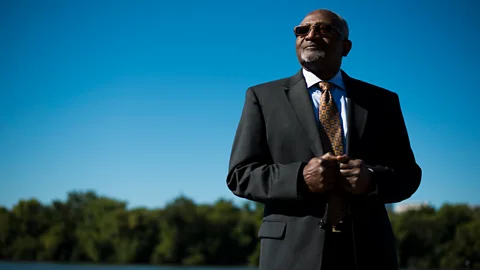 M. Joseph / Getty
M. Joseph / GettyThe difference between those who are causing climate change and those who are bearing the brunt of it in countries like Zambia is a large-scale version of a recurring local environmental injustice. In the early 1980s, campaigners in the US identified a repeating pattern of landfill sites or incinerators located near black neighbourhoods. Surveys of waste sites show that people of colour are still often exposed to higher levels of pollution, raising the possibility of a connection between race and environmental harm.
"Without a doubt, racism influences the likelihood of exposure to environmental and health risks," wrote Robert Bullard in 1993, in the book Confronting Environmental Racism. "Whether by conscious design or institutional neglect, communities of colour in urban ghettos, in rural 'poverty pockets', or on economically impoverished Native-American reservations face some of the worst environmental devastation in the nation."
Bullard is considered one of the founders of the environmental justice movement, which continues to fight inequality to this day. Black communities are still resisting coal power stations and chemical plants near their homes. For example, a 2021 map of exposure to coal ash pollution in the US found that "nationwide, the burden of coal ash pollution is carried disproportionately by communities of colour and low-income communities". The increased risk of pollution is compounded by reduced access to healthcare, fewer resources for legal costs, and less political power to oppose the polluters.
When it comes to fossil fuels, there is a double edge to environmental justice. It is often people of colour who put up with the pollution from the fossil fuel industry. Those same communities may find themselves at risk from the long-term effects of the industry, in the form of disasters caused by climate change. A study of fire risk in the US found that "wildfire vulnerability is spread unequally across race and ethnicity", with majority black, Hispanic or Native American districts facing 50% greater vulnerability compared with other groups. Multiple forms of disadvantage are behind that finding, including less money spent on reducing the risk of fire, under-funded emergency services, and lower rates of private insurance.
These problems extend well beyond the US, and beyond racial categories too. Climate change is a multiplier of all forms of social disadvantage, with divisions along class lines, gender, age, and much else besides. In India it is the lower castes who stand to lose the most from climate change. Globally, indigenous peoples and nomadic tribes are often more vulnerable. As Mulenga notes, "climate justice, social justice and racial justice are all interconnected".
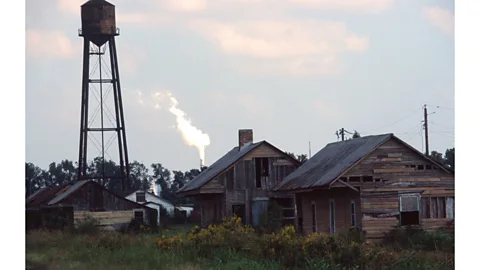 Andrew Lichtenstein / Getty
Andrew Lichtenstein / GettyFor the climate justice campaigner Asad Rehman, currently executive director of the poverty and justice charity War on Want, the issue is systemic: "If you want to understand why 40 years of climate diplomacy has failed to bend the curve on temperature rises, you have to go back and understand racialised capitalism – how race is codified to justify the exploitation and subjugation of people."
Even though some exploitative practices may be in the past, the legacy of their unjust structures remains, and carries through into decision-making about climate change today, he says. "Ultimately our economic system has at its core this notion that in the pursuit of capital accumulation and profit, some people can be sacrificed, and that has overwhelmingly been people in the Global South," he says. "So we have to understand the connection between slavery, colonialism and racialised capitalism, which creates the conditions for the climate crisis."
The anthropologist Jason Hickel also makes this colonial connection. As part of his work on global inequality, he has studied responsibility for climate change between the Global North (the US, Canada, Europe, Australia, New Zealand, Israel and Japan) and the Global South (Latin America, Africa and Asia). "Our study calculated how much each nation has exceeded their fair share of the 'safe' planetary boundary for CO2 emissions," he says. The results are "staggering", he says: the study found the Global North is responsible for 92% of all excess global emissions, while the Global South is responsible for only 8%.
"The nations of the Global North have effectively colonised the atmospheric commons. They've enriched themselves as a result, but with devastating consequences for the rest of the world and for all of life on Earth."
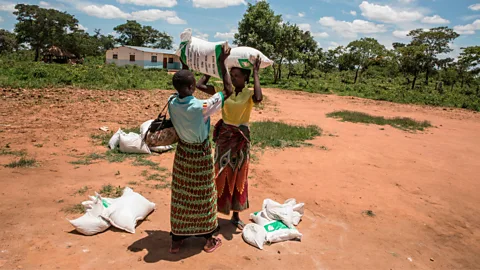 Guillem Sartorio / Getty
Guillem Sartorio / GettyIt is the countries of the Global North that industrialised first, and here that the power base of the fossil fuel corporations emerged. Here is where energy use and resource consumption are highest – and therefore where carbon footprints are largest. People drive and fly, often eat more meat and dairy, and have fridges and gas boilers in their homes. These are countries with majority white populations. Conversely, the countries with the lowest emissions are mainly across sub-Saharan Africa and South and East Asia, with majority black and brown populations. Even accounting for the huge emissions from China, which are relatively recent, white people have had a greater cumulative impact on the climate.
"We did not analyse race," says Hickel, "although it is not difficult to see that a racial disparity is at play here. But our results do illustrate a clear colonial dimension. The European colonial powers, and the European settler colonies, are disproportionately responsible for causing excess emissions. Meanwhile, we know that the impacts of climate breakdown fall disproportionately on the Global South. Communities in the Global South have been hit twice over: first by colonisation, and now by climate breakdown."
According to this argument, the ongoing injustices of climate change are based in economic systems that privilege some people over others. Centuries of unequal power relationships have embedded this structural injustice, so that climate change echoes the power relationships of colonialism and empire. Independence may have brought political freedom, but many structural injustices remain. The flow of wealth is the same as it was under empire, with rich white countries extracting what they need from other countries.
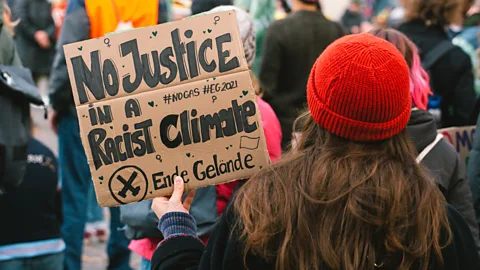 Ying Tang/NurPhoto/Getty
Ying Tang/NurPhoto/GettyAll these imbalances of power play into climate talks. Many parts of the temperate north are less exposed to the immediate dangers of climate change, but hold far greater economic and political power. The nations of the Global North have been able to shape climate policies around their national interests first. For example, the Paris Agreement agreed to limit warming to well below 2C, with 1.5C of warming as an ambition. It is disproportionately people of colour who will pay the difference for that extra half a degree. In this way, unambitious targets or protecting fossil fuel investments perpetuates racial injustice.
The UN-led talks, including the most recent COP26 round in Glasgow, have also failed to agree compensation for the loss and damage caused to the Global South, something Hickel argues is essential: "The rich nations must compensate for the damages that their excess emissions have inflicted on other countries. Social movements in the Global South have long been calling for climate reparations and it's time for our leaders to take this issue seriously."
Rehman welcomes the new focus on intersectional climate action that has been demonstrated by the Fridays for Future movement, joining long standing climate justice advocates from the developing countries and indigenous communities. "We've made huge strides in terms of language and understanding. We've yet to translate that into transformational political demands."
In order to build that shared purpose and deliver transformation, "it's time to centre the voices of those most impacted by the climate crisis" adds Mulenga. "By combining the resources with the experience and knowledge of those most impacted by the crisis; we can build a diverse and powerful coalition for climate justice."
The response to demands from vulnerable countries for richer countries to take responsibility will determine whether climate change becomes a problem that unites or divides humanity. It may be a moment of shared purpose. Or history may come to know it as the next chapter in a long story of racial oppression, alongside slavery, colonialism and empire.
If you liked this story, sign up for the weekly bbc.com features newsletter, called "The Essential List" – a handpicked selection of stories from BBC Future, Culture, Worklife, Travel and Reel delivered to your inbox every Friday.
